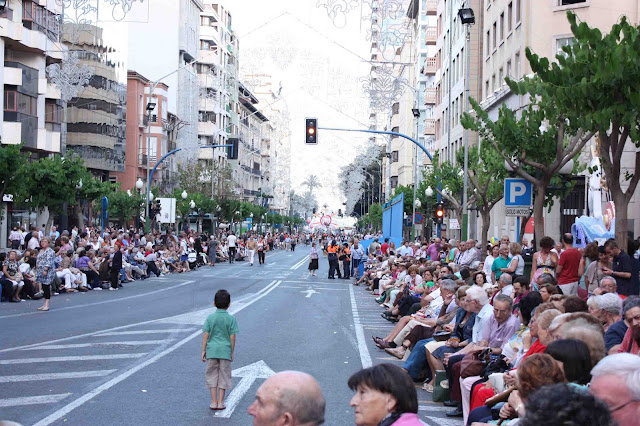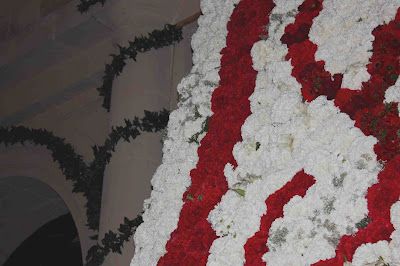No, I have not messed up my camera. This is a photo of the sky an hour ago. It's like this a lot of the time. Just a beautiful blue without a cloud at all, both in winter and in summer. Although in winter the temperature drops right down like anywhere else, but its not so bad because of the bright blue sky. I know that grey skies are depressing and I wish that I could box up some of this blue and the sunshine too, and send it to my family back home in the UK...
Alicante is known as La Ciudad de la Luz, meaning 'the City of Light'. We wear our sunglasses on sunny days here in the winter too because you just need them it's so bright.
Rain?
In the warm summer months from about mid June to mid September, my umbrella usually stays in its drawer. I actually cant remember the last time it rained. It was probably in June. My clothes dry in an hour or so when I hang them out and when you go out you never even have to think if you might need a cardigan or jacket... the evenings are so warm.
Hot and humid climate
In August, the sea is so warm in the evening that you can take a dip at midnight. Sometimes it's just so hot that its the best thing to do. Alicante has a humid climate so if it is about 30oC it feels more like 35oC. In July the temperature gets up to around 32oC at lunch time and drops to about 23oC at night. I recently went to a couple of towns inland and the temperature was 42oC, which felt like our 35oC because the climate was drier.
Air conditioning
If you are continuing your normal life as in working, studying, etc. in this heat it can get to be too much. Air conditioning units are a must at home and in the work place. All public transport has air conditioning as people would be fainting all over the place. My sister told me how in the heat wave they have just been experiencing in London, lots of people were going dizzy and fainting on the metro.
The Siesta
These hot temperatures during midday mean that people do not want to be out on the streets. That's another reason why shops traditionally close at lunch time here in Spain and open again in the afternoon until about 9pm in the evening. Also, a siesta (afternoon nap, or power nap) is difficult not to have when its so hot you dont know what to do with yourself!
So when you are moaning about your heating bill in the UK during the cold months, spare a thought for us who have a heating AND a cooling bill!






















































